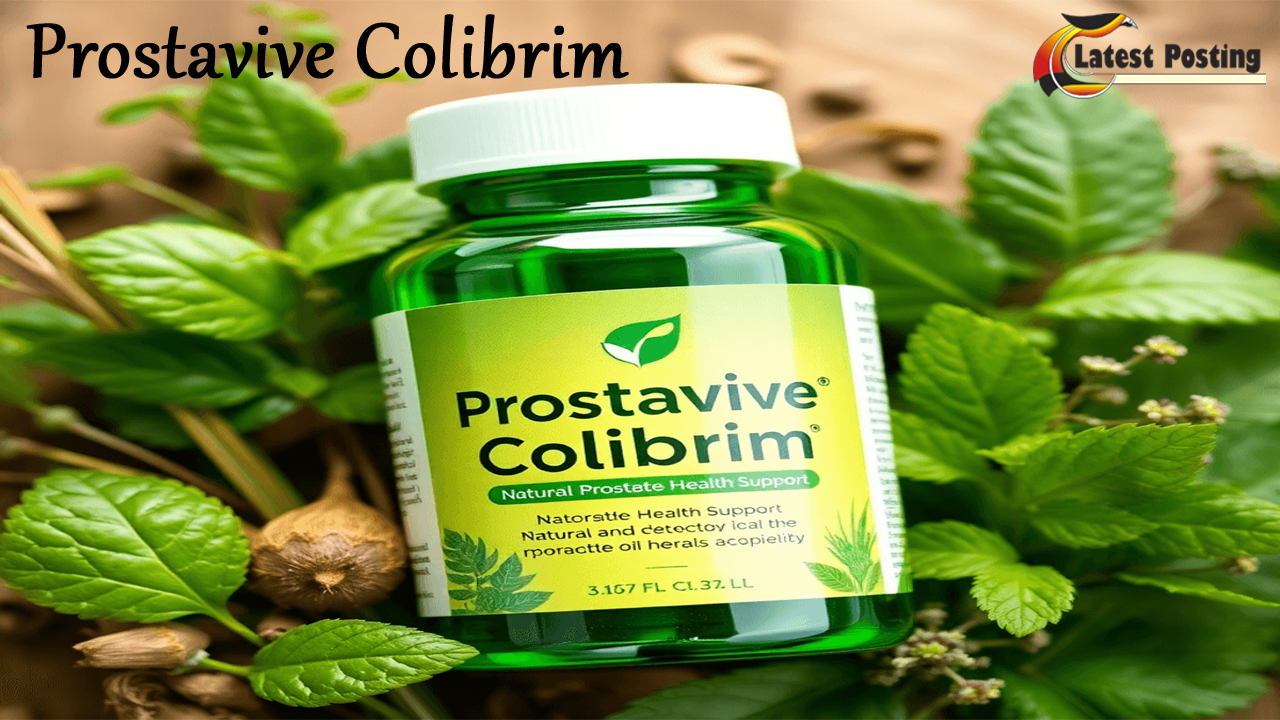The Nordic Curl is one of the most effective exercises for building strong hamstrings. This bodyweight movement challenges your posterior chain (the muscles on the back of your body) in a unique way, combining strength and control. It’s a game-changer for athletes and fitness enthusiasts.
What Is the Nordic Curl?
The Nordic Curl is an exercise that targets your hamstrings. Here’s how it works:
- You start by kneeling on the ground with your feet secured.
- From this position, you lower your upper body toward the ground while keeping your hips extended.
- The key is to use only your hamstrings to control the movement and resist gravity.
When done correctly, the Nordic Curl delivers amazing results.
Why Are Strong Hamstrings Important?
Having strong hamstrings is crucial for various athletic movements and overall lower body health. Here are some reasons why:
- Explosive sprinting power: Strong hamstrings contribute to generating speed and power during sprints.
- Quick direction changes: Athletes often need to change direction rapidly, which requires strong hamstring muscles.
- Jump performance: Hamstring strength plays a role in jumping ability, whether it’s for basketball, volleyball, or other sports.
- Lower back health: Weak hamstrings can lead to imbalances and strain on the lower back, so strengthening them is important for spinal health.
- Athletic longevity: Maintaining strong hamstrings can help prevent injuries and keep athletes performing at their best over time.
What Will You Find in This Guide?
In this comprehensive guide, you’ll discover everything you need to know about mastering the Nordic Curl:
- Proper form and technique for safe execution
- Progressive variations suitable for all fitness levels
- Science-backed benefits of the exercise
- Strategic programming tips to incorporate Nordic Curls into your routine
- Recovery and nutrition guidelines to support your training
Whether you’re an athlete looking to improve performance or someone wanting to strengthen their hamstrings, this guide will provide valuable insights and practical advice.
Understanding the Nordic Curl

The Nordic Hamstring Curl is a unique bodyweight exercise that specifically targets the hamstrings through a challenging eccentric movement. Unlike traditional hamstring exercises that often use weights or machines, the Nordic Curl relies on your body’s resistance against gravity.
How the Nordic Curl Works
Here’s how the Nordic Curl works:
- Starting Position: Kneel on a padded surface with your ankles secured.
- Descent: From an upright position, slowly lower your torso toward the ground while keeping your hips locked.
- Hamstring Engagement: Your hamstrings will work to control this downward movement, creating a powerful eccentric contraction.
What Makes Nordic Curls Different?
What makes Nordic Curls different from other exercises like leg curls or deadlifts is their specific focus on the lengthening phase of the hamstrings. This exercise challenges your muscles to resist gravity’s pull instead of working against external weights. The movement pattern closely resembles real-world athletic actions, making it especially beneficial for sports performance.
Key Differences from Other Hamstring Exercises:
- Requires minimal equipment
- Emphasizes eccentric strength development
- Creates higher muscle activation compared to machine-based alternatives
- Allows natural range of motion without fixed movement paths
Understanding the Hamstrings: Key Muscles for Strong Legs
The hamstring muscle group is made up of three muscles that work together to enable powerful leg movements:
- Biceps Femoris – This muscle has two parts and is located on the outer side of the thigh. It helps extend the hip joint and bend the knee while also providing stability during activities like running and changing direction.
- Semitendinosus – Situated on the inner side of the thigh, this long muscle assists in rotating the lower leg inward when the knee is bent. It plays a crucial role in keeping the knee aligned during dynamic movements.
- Semimembranosus – The deepest of the three muscles, it works alongside the semitendinosus to provide stability on the inner side of the knee. This muscle becomes especially active when slowing down while running.
These muscles cross both the hip and knee joints, making them important for everyday actions such as walking as well as more complex athletic movements. During an exercise called Nordic Curl, all three muscles work together to control the lowering motion and generate power for the upward phase, resulting in overall strengthening of the back side of the body.
The Benefits of Nordic Curls for Athletes
Nordic Curls are an exercise that can greatly improve athletic performance and prevent injuries. This powerful movement specifically targets the hamstrings, using a combination of strength and control to deliver remarkable benefits for athletes in various sports.
1. Improved Hamstring Strength and Flexibility
One of the key advantages of Nordic Curls is their ability to enhance both strength and flexibility in the hamstrings. Unlike traditional exercises that primarily focus on one aspect, such as leg curls for strength or static stretching for flexibility, Nordic Curls effectively train both qualities simultaneously.
- Increased Strength: The eccentric nature of Nordic Curls, where the hamstrings lengthen under tension, has been shown to produce significant gains in hamstring strength. This is particularly important for athletes who rely on explosive movements like sprinting or jumping.
- Enhanced Flexibility: As you lower your body during the exercise, the hamstrings are stretched beyond their normal range of motion. Over time, this dynamic stretching effect can lead to improved flexibility, which is crucial for maintaining proper movement mechanics and preventing injuries.
2. Injury Prevention through Hamstring Conditioning
Injuries to the hamstring muscles are common in many sports, often occurring during high-intensity activities such as sprinting or sudden changes in direction. By incorporating Nordic Curls into their training routine, athletes can proactively condition their hamstrings and reduce the risk of these types of injuries.
- Strengthening Weak Links: The eccentric loading provided by Nordic Curls targets the often-neglected muscle fibers responsible for deceleration and stabilization during dynamic movements. Strengthening these weak links can help prevent imbalances that contribute to injury.
- Improving Muscle Control: Eccentric training has also been shown to enhance neuromuscular control, allowing athletes to better manage forces acting on their muscles during explosive actions. This increased control can be beneficial in reducing the likelihood of strains or tears.
3. Sport-Specific Benefits for Various Athletes
While Nordic Curls offer general benefits for all athletes, certain sports may see particularly pronounced improvements from this exercise.
- Sprinters: The emphasis on eccentric strength development in Nordic Curls directly translates to improved sprinting performance by enhancing the ability to absorb forces during ground contact.
- Soccer Players: The combination of strength and flexibility gained from Nordic Curls can aid soccer players in executing powerful kicks while maintaining optimal hip positioning.
- Basketball Players: Eccentric training has been linked with increased vertical jump height—a key attribute for basketball players seeking to elevate their game.
- Track and Field Athletes: Events such as long jump or triple jump heavily rely on explosive leg power; thus incorporating Nordic Curls into training may yield positive outcomes.
- Combat Sports Practitioners: Fighters often require strong legs for takedowns or grappling maneuvers—both actions that benefit from enhanced hamstring strength achieved through this exercise.
4. Practical Implementation Tips
To maximize the benefits of Nordic Curls:
- Progress Gradually: Start with bodyweight variations before adding resistance (e.g., weighted vests) as your strength improves.
- Focus on Form: Maintain proper technique throughout each repetition—avoid compensatory movements like arching your back or using momentum.
- Integrate with Other Exercises: Combine Nordic Curls with other hamstring-focused drills (e.g., Romanian deadlifts) for comprehensive development.
By consistently incorporating these tips into your training regimen alongside regular practice of Nordic Curls, you can unlock their full potential as an effective tool for enhancing athletic performance while minimizing injury risk.
2. Improved Speed, Agility, and Power on the Field
Strong hamstrings are essential for athletic performance. They play a crucial role in activities like sprinting, where they generate force to propel you forward and control your speed when slowing down. This combination of actions is key for making quick turns and accelerating rapidly.
Benefits of Nordic Curls for Athletes
Athletes who include Nordic Curl training in their routine can expect the following benefits:
- Faster Sprinting: The strength gained from the exercise helps maintain proper running form and longer strides.
- Quicker Direction Changes: Strong hamstrings provide stability during cutting movements and lateral transitions.
- More Powerful Jumps: Activating the muscles in the back chain improves vertical leaps and distances in horizontal jumps.
Studies have shown that athletes who regularly do Nordic Curls can improve their sprint times by up to 15% and significantly increase their speed when changing directions. This exercise specifically targets the hamstrings, training them to handle high forces during rapid deceleration – an important skill for sports such as soccer, basketball, and football.
Your ability to generate power with your hamstrings while still having control over your movements directly affects your athletic abilities. By strengthening these muscles through Nordic Curls, you’re laying the groundwork for better performance in various sports.
Mastering the Technique: How to Perform Nordic Curls Like a Pro
Executing a perfect Nordic Curl requires attention to detail and proper positioning. Here’s your step-by-step guide to mastering this powerful hamstring exercise:
Starting Position:
- Secure your ankles under a sturdy support or ask a training partner to hold your feet
- Position yourself on your knees on a padded surface
- Keep your torso straight and engage your core
- Place your hands across your chest or at your sides
Execution Steps:
- Begin the movement by keeping your hips extended
- Lower your torso forward slowly while maintaining a straight line from your knees to shoulders
- Resist the downward pull as long as possible
- Once you reach the bottom, push yourself back up to the starting position
Key Form Points:
- Keep your hips locked throughout the movement
- Maintain a neutral spine position
- Control the descent speed
- Focus on the eccentric (lowering) phase
Variations for All Levels: Band-Assisted Versions and Weighted Curls
Beginner Modifications:
- Use resistance bands for assistance
- Start with partial range of motion
- Perform near a wall for safety
- Practice the negative phase only
Intermediate Progressions:
- Increase time under tension during descent
- Reduce band assistance gradually
- Add isometric holds at various angles
- Incorporate tempo variations
Advanced Variations:
- Add weight using a plate held across chest
- Perform single-leg variations
- Include explosive concentric phase
- Increase sets and repetitions
Band-Assisted Setup:
- Loop a resistance band around a secure anchor point
- Hold the other end across your chest
- Allow the band to assist your movement up
- Gradually decrease band resistance as strength improves
Progressive Loading Tips:
- Start with 2-3 sets of 3-5 reps
- Focus on quality over quantity
- Increase difficulty by reducing assistance
- Add weight only after mastering bodyweight version
Remember to maintain proper form throughout each variation. If you feel any strain in your lower back or knees, return to a more basic version until your strength improves. Listen to your body and progress at your own pace through these variations.
Programming Nordic Curls in Your Workouts for Maximum Gains
Building hamstring strength through Nordic Curls requires strategic programming. Let’s dive into the optimal training structure to maximize your gains.
Recommended Training Frequency
- Beginners: 1-2 sessions per week
- Intermediate: 2-3 sessions per week
- Advanced: 3-4 sessions per week
Sets and Reps Structure
- Strength Focus: 3-4 sets of 4-6 reps
- Hypertrophy Focus: 3-5 sets of 8-12 reps
- Endurance Focus: 2-3 sets of 12-15 reps
Rest periods between sets should range from 90-180 seconds, depending on your fitness level and training goals.
Smart Integration Tips
- Place Nordic Curls early in your workout when fresh
- Pair with quad-dominant exercises for muscle balance
- Alternate between bilateral and unilateral variations
- Space Nordic Curl sessions 48-72 hours apart
Sample Workout Routine: The Ultimate Hamstring Builder
Workout A – Heavy Focus
- Nordic Curls: 4 sets x 5 reps
- Romanian Deadlifts: 4 sets x 6-8 reps
- Glute Ham Raises: 3 sets x 8-10 reps
- Single-Leg Hip Thrusts: 3 sets x 12 reps per side
Workout B – Volume Focus
- Band-Assisted Nordic Curls: 3 sets x 10-12 reps
- Stiff-Leg Deadlifts: 3 sets x 12-15 reps
- Lying Leg Curls: 3 sets x 15-20 reps
- Walking Lunges: 3 sets x 20 steps
Progressive Loading Strategies
- Week 1-2: Focus on eccentric-only Nordic Curls
- Week 3-4: Add partial concentric movements
- Week 5-6: Attempt full range of motion
- Week 7-8: Introduce weighted variations
Training Variables to Manipulate
- Tempo: Slow eccentric phase (4-6 seconds)
- Range of Motion: Partial vs. full movement
- External Load: Body weight to weighted variations
- Rest Periods: Adjust based on intensity
Remember to track your progress using metrics like total reps completed, time under tension, and quality of movement. This data helps optimize your training program and ensures consistent progression in hamstring development.
Safety First! Precautions to Take When Doing Nordic Curls
The Nordic Curl is an advanced exercise that requires proper preparation and technique to prevent potential injuries. Understanding the risks and implementing appropriate safety measures ensures you can perform this movement effectively while protecting your body.
Key Safety Considerations:
- Warm up thoroughly before attempting Nordic Curls
- Start with assisted variations if you’re new to the exercise
- Maintain core engagement throughout the movement
- Keep your hips aligned and stable
- Control the eccentric phase – avoid dropping too quickly
Common Risk Factors to Watch For
1. Hamstring Strain Risk
- Attempting too much resistance too soon
- Poor eccentric control during the lowering phase
- Inadequate warm-up before performing the exercise
- Previous hamstring injuries not fully healed
2. Knee Stress
- Incorrect knee positioning during the movement
- Excessive pressure on the knee joint
- Poor ankle positioning or instability
Red Flags That Require Immediate Attention:
- Sharp pain in the hamstrings
- Discomfort behind the knee
- Clicking or popping sensations
- Persistent soreness that doesn’t improve
When to Seek Professional Guidance
Professional guidance becomes essential in these situations:
- Previous InjuriesRecent hamstring strains
- Knee complications
- Lower back issues
- Technical ChallengesDifficulty maintaining proper form
- Unable to control the descent
- Experiencing unusual pain or discomfort
Modifications for Special Populations
Beginners:
- Use band assistance
- Start with partial range of motion
- Focus on controlled negatives
Individuals with Prior Injuries:
- Work with lighter resistance
- Implement longer warm-up protocols
- Consider alternative exercises initially
Older Adults:
- Begin with supported variations
- Progress gradually
- Monitor recovery between sessions
Working with a Professional
A qualified trainer or coach can:
- Assess your movement patterns
- Identify potential limitations
- Create personalized progression plans
- Teach proper technique
- Monitor form during execution
- Adjust programming based on response
Remember to listen to your body and respect its signals. Progressive overload should be implemented gradually, allowing adequate time for adaptation and recovery between sessions.
Fueling Recovery After Your Nordic Curl Workouts: Nutrition Tips That Work
Your post-Nordic Curl nutrition strategy plays a vital role in maximizing strength gains and supporting muscle recovery. The intense eccentric loading of this exercise creates significant muscle micro-damage, making proper refueling essential.
Optimal Post-Workout Nutrition Window
- Consume protein within 30 minutes after your workout
- Aim for 20-30g of high-quality protein sources
- Include fast-digesting carbohydrates to replenish glycogen stores
Smart Protein Choices
- Whey protein shake
- Greek yogurt with berries
- Lean chicken or fish
- Eggs with whole grain toast
Carbohydrate Requirements
- 0.5-0.7g per pound of body weight
- Sweet potatoes
- Brown rice
- Fresh fruits
Hydration Guidelines
- Drink 16-20 oz of water for every pound lost during training
- Add electrolytes if training exceeds 60 minutes
- Monitor urine color – aim for light yellow
Recovery-Boosting Nutrients
- Magnesium-rich foods (nuts, seeds)
- Potassium sources (bananas, avocados)
- Anti-inflammatory foods (berries, leafy greens)
Remember to adjust portion sizes based on your training intensity and body weight. A well-planned nutrition strategy enhances muscle repair and prepares your hamstrings for your next training session.
Exploring Alternatives: Other Effective Exercises You Can Do Alongside or Instead Of The Nordics
While Nordic curls are exceptional for hamstring development, incorporating variety into your training routine can enhance results and prevent plateaus. Here’s a selection of powerful hamstring exercises to complement or substitute Nordic curls:
1. Prone Hamstring Curls
- Targets posterior chain muscles effectively
- Allows precise control of resistance
- Perfect for isolation work
- Ideal for beginners building foundational strength
2. Romanian Deadlifts (RDLs)
- Emphasizes the eccentric phase
- Develops hip hinge pattern
- Strengthens entire posterior chain
- Easily scalable with different weights
3. Glute Ham Raises (GHR)
- Bridges the gap between Nordic curls and machine exercises
- Provides natural progression pathway
- Builds both strength and stability
- Allows partial range of motion for beginners
4. Stability Ball Leg Curls
- Engages core muscles simultaneously
- Requires minimal equipment
- Challenges balance and coordination
- Great for home workouts
5. Single-Leg Good Mornings
- Addresses muscle imbalances
- Improves unilateral strength
- Enhances proprioception
- Builds functional stability
Mix these exercises throughout your training week to create a well-rounded hamstring development program. Each movement offers unique benefits and challenges your muscles in different ways, leading to comprehensive strength gains.
Research-Backed Evidence Supporting The Effectiveness Of The Nordics As A Game-Changer For Athletes’ Performance And Injury Prevention Strategies
Scientific research consistently validates the Nordic Curl’s effectiveness in athletic performance and injury prevention. A groundbreaking study published in the British Journal of Sports Medicine demonstrated a 65% reduction in hamstring injuries among soccer players who incorporated Nordic Curls into their training regimen.
Research highlights from multiple studies showcase the Nordic Curl’s impact:
- A 2020 systematic review in Sports Medicine revealed that athletes performing Nordic Curls twice weekly experienced a 51% increase in eccentric hamstring strength within 4 weeks
- Research from the American Journal of Sports Medicine found that Nordic Curls produced higher hamstring activation compared to traditional leg curls
- A longitudinal study tracking professional rugby players showed a 85% decrease in hamstring strain recurrence rates after implementing Nordic Curls
- The Scandinavian Journal of Medicine & Science in Sports documented significant improvements in sprint performance, jump height, and force production
These findings align with biomechanical analyses showing the Nordic Curl’s unique ability to target the hamstrings through their full range of motion while simultaneously strengthening connective tissues – a combination rarely achieved through conventional exercises.
FAQs (Frequently Asked Questions)

What is the Nordic Curl and how does it benefit hamstring strength?
The Nordic Curl is an exercise specifically designed to enhance hamstring strength through eccentric muscle contractions. It is crucial for overall athletic performance and injury prevention, making it an essential addition to any training regimen.
How do I properly perform a Nordic Curl?
To execute a Nordic Curl correctly, start by kneeling on a soft surface with your feet secured. Slowly lean forward while keeping your body straight from head to knees, using your hamstrings to control the descent. Push back up to the starting position using your hamstrings. Maintaining proper form throughout the movement is essential for effectiveness and safety.
What are some variations of the Nordic Curl for different fitness levels?
For those new to the exercise, band-assisted versions can provide support during the movement. As you become stronger, you can progress to weighted curls by adding resistance. These modifications help accommodate various fitness levels while still challenging your muscles.
What precautions should I take when performing Nordic Curls?
It’s important to be aware of potential risks associated with improper technique, such as hamstring or knee injuries. Individuals with prior injuries or limitations should consider modifications or consult a coach for personalized guidance to ensure safe practice.
How can I integrate Nordic Curls into my workout routine effectively?
Incorporate Nordic Curls into your training by following recommended frequency and sets/reps structures. They can be seamlessly added to existing workouts alongside other hamstring exercises like Romanian Deadlifts and Glute Ham Raises for a comprehensive lower body session.
What nutritional tips should I follow post-Nordic Curl workouts for recovery?
After completing your Nordic Curl workouts, it’s essential to consume adequate protein and carbohydrates to optimize recovery. Additionally, staying hydrated will further support muscle recovery and overall performance.





One thought on “Master the Nordic Curl: Your Ultimate Guide to Stronger Hamstrings”